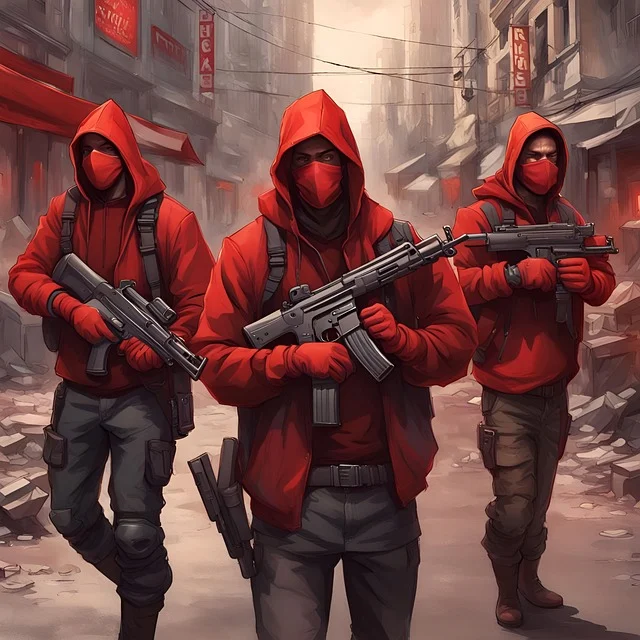In the vast universe of storytelling, villains often serve as the perfect counterpoint to heroes, embodying our darkest fears and desires. Yet, buried beneath their malicious exteriors lies an intricate web of motivations, insecurities, and a potential for redemption. “Captive Hearts: The Hidden Secrets of a Villain’s Embrace” delves into the complexities of these characters, exploring the paradox of attraction they hold for us and the often-tragic narratives that shape their identities.
The Allure of the Antagonist
One of the most compelling reasons audiences are drawn to villains is their magnetic charisma. Think of iconic figures like Maleficent, the Joker, or Loki—characters who flourish in the gray areas of morality. Their charm often overshadows their malevolence, creating a captivating juxtaposition that keeps viewers engaged. The reasons for this enchantment can be traced back to several psychological and societal factors:
- Empathy Through Tragedy: Many villains possess backstories steeped in trauma. The audience can empathize with their struggles, whether it’s rejection, loss, or betrayal, creating an emotional connection. For example, the tragic arc of Anakin Skywalker in “Star Wars” reminds us that even the most formidable villains can be products of their circumstances.
- Escapism and Power: Villains often embrace power in ways that heroes cannot, allowing audiences to vicariously experience a world where the usual rules do not apply. For viewers leading mundane lives, a villain’s defiance of societal norms can be thrilling and liberating—if only for a moment.
- The Complexity of Morality: Contemporary narratives favor anti-heroes and morally ambiguous characters. By blurring the lines between good and evil, stories challenge audiences to confront their own ethics and question the rigid dichotomy imposed by traditional narratives. This complexity is enticing, as it reflects the multifaceted nature of human existence.
The Untold Stories
To understand the true nature of these captivating villains, we must explore the hidden stories that shape them. A villain’s embrace is often a grim reflection of societal failures—abuse, neglect, and the inherent flaws of humanity. These narratives reveal the systemic issues that contribute to the rise of villainy:
- The Impact of Environment: Many villains emerge from toxic environments. The mythos surrounding characters like Magneto from “X-Men” illustrates how oppression and discrimination can breed resentment and a thirst for vengeance. Such portrayals compel us to consider our societal responsibilities, igniting discussions about prejudice, injustice, and empathy.
- The Quest for Understanding: Villains often act out of a desire to be understood or accepted. This quest can manifest in destructive ways, highlighting a universal human need for connection. The character complexity exhibited by figures such as Poison Ivy demonstrates how love and longing can warp one’s moral compass.
- Redemption Arcs: The possibility of redemption for a villain resonates deeply, emphasizing that transformation is achievable. The stories of individuals like Zuko from “Avatar: The Last Airbender” invite viewers to reflect on the potential for change and the strength it takes to confront one’s past.
The Duality of Attraction and Repulsion
While the emotional undercurrents of villainy can be enticing, they also evoke a sense of fear. The dichotomy of admiration and horror is central to the complexity of these characters. The danger they represent—the whims of unchecked power, the capacity for manipulation—serves as a reminder of humanity’s darker instincts.
- Cautionary Tales: Villains are often embodiments of what happens when ambition goes unchecked. Their stories function as cautionary tales, warning us of the potential consequences of straying too far from moral integrity. This aspect of their characterization serves to ground the narrative, reminding us of the importance of empathy, kindness, and self-restraint.
- The Dance of Coercion: The relationships villains forge—particularly with heroes—are complex and can border on obsession. The romanticization of toxic relationships in narratives sometimes glamorizes unhealthy dynamics, posing ethical questions that demand critical reflection. Understanding these dynamics invites deeper discussions around emotional manipulation and boundaries.
Conclusion: Embracing Complexity
“Captive Hearts: The Hidden Secrets of a Villain’s Embrace” transcends a mere exploration of antagonists; it challenges us to grapple with the truths of human nature. By dissecting the allure and tragedy of villainy, we unearth valuable insights relevant to our own lives.

